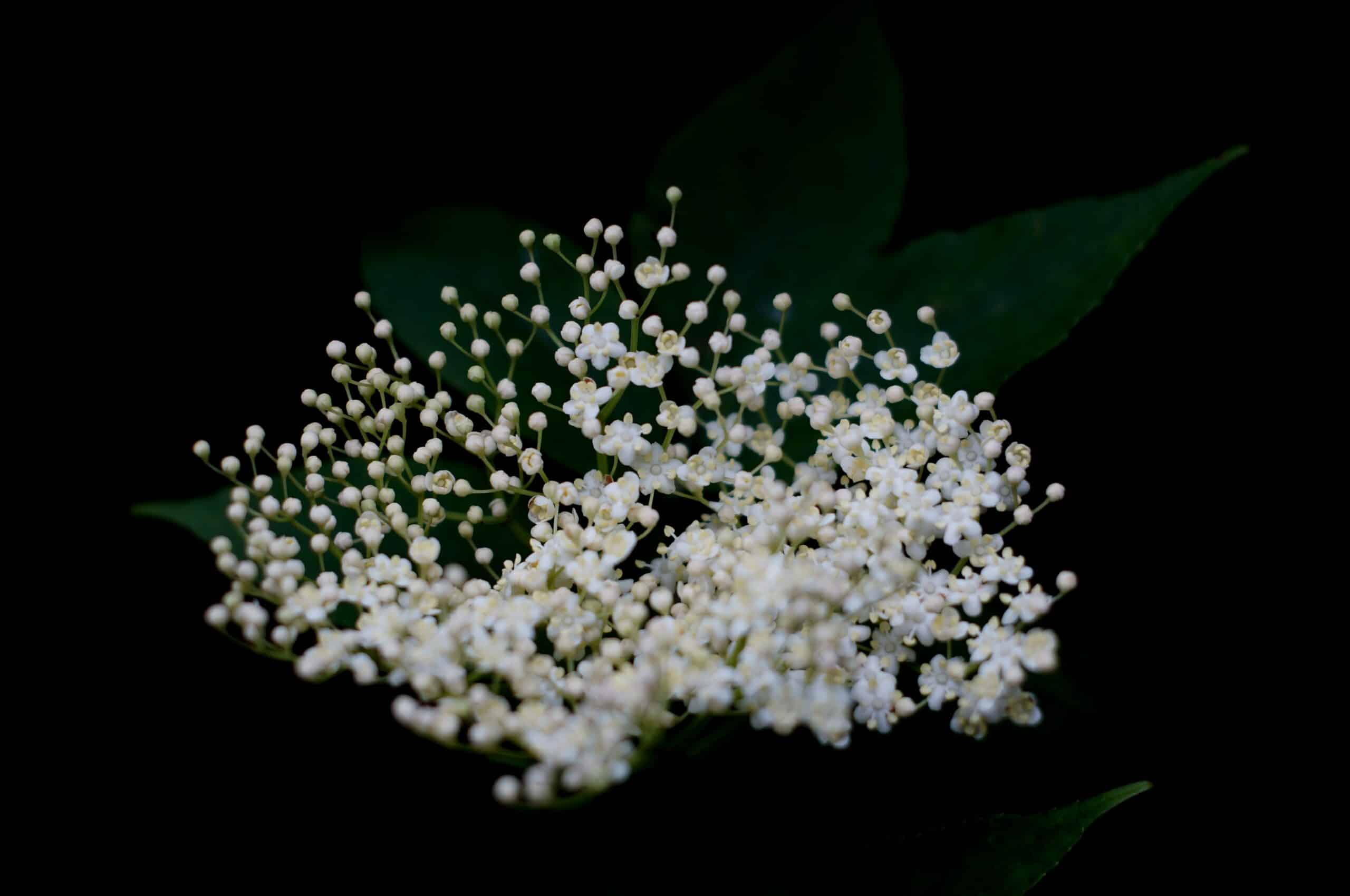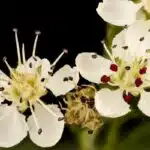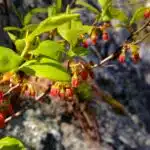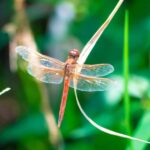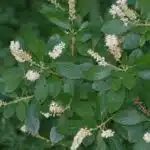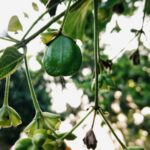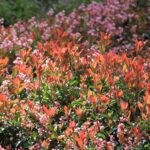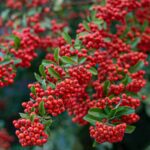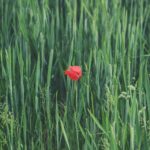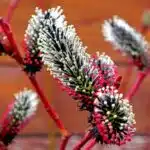Black Lace® Elderberry is a popular shrub that has seen a rapid rise in popularity over the past few years. In fact, according to the latest data, the demand for elderberry plants has increased by 300% since 2016! As more and more people are recognizing how beneficial elderberries can be for their health, they’re turning to Black Lace® Elderberry as an attractive addition to their garden.
As a specialist in botany and gardening, I am here to provide you with all of the information you need to grow and care for your own Black Lace® Elderberry. From choosing the right location for planting to learning about general maintenance requirements, I’m here to help you create a beautiful garden that will thrive for many years.
Black Lace® Elderberry is an easy-to-care-for shrub that requires minimal maintenance but provides ample rewards. With its deep burgundy foliage and showy white flowers in summertime, this shrub can transform any garden into a stunning work of art. Plus, it offers delicious fruits that are perfect for making jams, jellies, syrups, and other delectable treats!
Overview Of Black Lace® Elderberry
Black Lace® Elderberry is a stunning and popular shrub that offers a unique texture and color to the garden. This deciduous shrub is known for its lacy, dark purple foliage and fragrant, white flowers that bloom in late spring. It can reach heights of up to 8 feet tall, but it can also be pruned to a desired size. With proper care and maintenance, Black Lace® Elderberry will thrive in most locations.
When selecting a location for your Black Lace® Elderberry, it’s important to consider the plant’s preferred environment. It prefers full sun or partial shade with moist, well-drained soil; however, it can tolerate some drought. It should be planted in an area with good air circulation to reduce disease problems and can benefit from mulching during the winter months. Additionally, spacing your plants at least 6 feet apart will ensure they have adequate room to grow without overcrowding each other.
With its attractive foliage and fragrant blooms, Black Lace® Elderberry adds beauty and interest to any landscape setting. Plus, being relatively low-maintenance makes this shrub ideal for gardeners of all skill levels. Following these simple steps will help ensure your Black Lace® Elderberry thrives for years to come!
Choosing the right location is key when planting this beautiful shrub. Taking into account the plant’s needs of full sun or partial shade with moist soil and good air circulation will help you select the best spot for success.
Choosing A Location For Growing
Choosing the right place for your Black Lace® elderberry is a bit like finding the perfect home. It needs to be just right in order for it to thrive and reach its fullest potential. Like a home, there are certain features that will make one location more suitable than another, so it’s important to consider carefully what kind of environment you can provide.
When selecting a spot, it’s best to look for an area with full sun or partial shade and some protection from strong winds. A slightly acidic soil is also ideal, since this type of elderberry prefers loamy or sandy soils with a pH between 5.0 and 6.5. If you’re planting multiple bushes, try spacing them around five feet apart to give them plenty of room to grow without overcrowding.
Also, keep in mind that these shrubs can spread rather quickly if left unchecked, so you may want to prune regularly or invest in barriers such as barriers or root barriers to contain the growth once it reaches maturity. With diligent care and attention, though, you can create the ideal environment for your Black Lace® elderberry plants – one that will ensure they achieve their maximum growth potential and live long and happy lives.
By taking into account factors such as sunlight exposure, wind protection, soil type and spacing between bushes when selecting a location for planting your Black Lace® elderberry shrubbery, you’ll be setting yourself up for success when it comes time to meeting your elders’ soil requirements.
Soil Requirements
When it comes to growing Black Lace® Elderberry, soil is the most important factor. It’s the foundation that will support the plant as it grows and matures, so you want to make sure you get this right. One of the best metaphors I’ve heard for this process is that soil is like a cake batter: if it’s too thick, your plant won’t be able to grow; if it’s too thin, however, your plant may not have enough resources to survive.
The ideal soil for Black Lace® Elderberry should be neutral to slightly acidic in pH (6.0-7.5). It should also contain plenty of organic matter such as compost or well-rotted manure. Sandy loam or loamy soils are great choices for supporting elderberry growth because they allow plenty of air and water movement through the root zone. The soil should also be well-draining; standing water can cause root rot and other issues with elderberries.
You’ll want to ensure that the area you intend on planting your elderberries has been tested for nutrient deficiencies or any potential contaminants before moving forward with planting. This will save time and money in the long run by helping you create an optimal growing environment right away – something every gardener wants!
Planting And Spacing
As a botanist and gardener, planting and spacing Black Lace Elderberry is like the composition of a beautiful painting. It’s an intricate process of balance and harmony, where one wrong move can disrupt the entire picture. By doing it correctly, however, you’ll be rewarded with a lush landscape that will captivate the eye.
When it comes to planting your Black Lace Elderberry, start by digging holes two feet apart in well-drained soil. The hole should be just deep enough to cover the root ball on your plant. When transplanting from a pot, make sure you don’t disturb any of the roots too much so they can continue to grow strong and healthy. Once your elderberries are planted, spread mulch around them to help retain moisture and shield them from cold winter temperatures.
To ensure successful growth for your elderberries, prune them annually in late winter or early spring before new growth begins. This encourages fresh new growth and helps to keep them looking their best. Pruning also helps remove dead or diseased branches that could potentially cause problems for the rest of the plant. Proper pruning will help encourage healthy plants that will reward you with vibrant blooms come springtime!
Watering Needs
When it comes to the watering needs of Black Lace® Elderberry, it’s important to take a mindful approach. A case in point is the garden at Cedar Hill Farm, located in Georgia, U.S.A. During the growing season, this farm spends considerable effort to ensure that their elderberry plants are given enough water for healthy growth and development.
To start off with, elderberries like soil that’s kept consistently moist but not soggy. As a general rule of thumb, they should be watered regularly and deeply so that their roots have access to plenty of moisture during the summer growing season. That said, they don’t need much additional water during the winter months when they are dormant.
When it comes to ensuring optimal hydration levels for your elderberry plants, it’s also essential to pay attention to other environmental factors such as temperature, humidity and wind speed. All these elements can influence how much water your plants will require each day or week, so be sure to adjust your watering schedule accordingly.
By taking a mindful approach towards watering your Black Lace® Elderberry plants and paying attention to other environmental factors too, you can ensure that they stay healthy and productive all year round – setting them up perfectly for success when it comes time for fertilizer requirements!
Fertilizer Requirements
Fertilizer is an essential part of the Black Lace® Elderberry’s growth cycle. It helps the plant to gain optimal nutrition and health, allowing it to reach its full potential. As with any fertilizer, it’s important to apply it correctly and use the right type for your particular variety.
For best results, we recommend a balanced granular fertilizer with a ratio of 1-1-1 (N-P-K). This provides just the right amount of nitrogen, phosphorus, and potassium that Black Lace® Elderberries need for healthy growth. Generally speaking, you should apply this fertilizer twice a year – once in early spring and again during mid-summer. Additionally, during periods of drought or extreme heat you may need to supplement with additional watering or liquid fertilizer as needed.
It’s also important to avoid overfertilizing your plants as this can do more harm than good by burning their roots or promoting disease. If you follow our guidelines above then you’ll be sure to get the most out of your Black Lace® Elderberry bush while keeping it healthy and strong.
Now that we’ve discussed fertilizing practices for Black Lace® Elderberries, let’s move on to pruning for shape and size…
Pruning For Shape And Size
Pruning for shape and size is an essential part of caring for the Black Lace® Elderberry. To ensure the plant remains healthy, it’s important to prune it regularly. Here are a few tips on how to do it:
Before you start pruning, it’s important to know where the buds are located – these will indicate which branches should be kept and which should be removed.
In late winter or early spring, remove any dead or damaged branches, as well as any branches that cross each other.
To encourage dense growth, thin out interior branches so that there is adequate light penetration into the center of the plant.
When done correctly, pruning can help maintain the desired size and shape of your Black Lace® Elderberry while also promoting its health. Taking care to properly trim your elderberry bush will ensure that it continues to thrive in your garden for many years to come. The next step in caring for this unique variety is controlling diseases and pests.
Controlling Diseases And Pests
It is estimated that over 70% of fruit-bearing shrubs are affected by diseases and pests. Controlling these ailments is an important part of the process for growing Black Lace® Elderberry bushes. There are several methods for controlling plant diseases and insect infestations, all of which require careful monitoring and timely application.
First off, prevention is key when it comes to avoiding or reducing disease and pest damage in your Elderberry bush. Proper pruning, cleaning up debris around the area, and providing adequate water can help reduce the risk of infestation. Additionally, good air circulation around the bush can be beneficial in keeping pests from invading it. Additionally, fungicides or insecticides may be applied as needed to treat existing issues or prevent new ones from occurring.
The timing of any chemical applications should also be taken into consideration when attempting to control pests or diseases in elderberry bushes. Many products have specific instructions regarding when they should be used in order to be most effective at treating a problem without causing too much harm to the plant itself. It is important to read labels carefully before applying any chemicals and to always follow directions exactly as indicated on the label.
TIP: To ensure you are using pesticides safely and effectively, seek professional advice from your local agricultural extension office or garden center specialist who can provide you with a tailored solution designed specifically for your situation.
Propagation Techniques
Propagation techniques are essential for growing and caring for Black Lace® Elderberry. The plant’s popularity has skyrocketed in recent years, with sales of the species increasing by an impressive 50% in the last decade alone. As such, this section will provide a detailed look at the best methods of propagating Black Lace® Elderberry.
In terms of propagation, cuttings are generally regarded as being the most reliable method. Cuttings should be taken from healthy plants and should be no more than 30 cm in length. They should be left to dry out overnight before being planted into moist soil. Layering is also an option; simply bend a low-growing branch down to the ground, burry it in soil and wait for it to develop roots before cutting it off from the mother plant.
For those who wish to propagate Black Lace® Elderberry through seed, it is important to note that seeds are not always viable. To ensure success, germination should take place directly after harvesting – if this isn’t possible, then storing the seeds in a cool, dark place can help prolong their viability. Once germinated, the young seedlings should be transplanted into well-draining soil when they have reached 5 cm in height.
With these simple tips, gardeners will have all of the information they need to successfully propagate Black Lace® Elderberry plants and start caring for them in earnest during winter months.
Winterizing Black Lace® Elderberry
Winterizing Black Lace® Elderberry is essential for ensuring its survival in colder climates. For best results, the plant should be mulched with straw, evergreen boughs or other material when temperatures reach 0°C (32°F). This insulation helps to protect its shallow roots from freezing and keeps them from drying out. In addition, it’s important to provide shelter from strong winds and cold drafts. To further help protect the shrub during extreme temperatures, wrap it in burlap or other protective fabric.
When winterizing Black Lace® Elderberry, it’s also important to prune any dead or damaged branches as soon as possible. Pruning helps promote healthy growth and encourages new shoots in the springtime. It’s recommended that you only prune a third of the branches in any given year to limit stress on the plant. When cutting off dead woody stems, make sure to use sharp gardening shears and avoid leaving any jagged edges behind. This will help prevent disease problems in the future.
Winterizing your Black Lace® Elderberry is an essential step for ensuring a healthy harvest come springtime. By taking some extra care now you can ensure that your shrub will stay healthy through even the coldest of winters! With proper winterization techniques, you can look forward to enjoying sweet berries for years to come.
Harvesting And Storage Of Berries
Harvesting and storage of berries is an important step in the maintenance of Black Lace® Elderberry plants. With the right care, these plants can yield a plentiful supply of delicious and nutritious fruits. As with any crop, proper harvesting and storage techniques are essential for ensuring the quality and freshness of your berries.
When it comes to harvesting time, timing is everything! Berries should be picked when they are ripe – typically in late summer or early fall – and when they have a deep purple-black color. When picking elderberries, avoid any that look withered or discolored as these may be diseased or otherwise not suitable for eating. It is also important to pick all the berries off each stem at once to ensure that the remaining stems remain healthy and productive.
Once harvested, elderberries can be stored either fresh or frozen for later use. Fresh elderberries should be kept in a cool, dry place such as a refrigerator or pantry. If freezing them, make sure to spread them out on a tray before placing into an airtight container to prevent clumping together. Frozen berries should last up to six months if stored properly.
TIP: To get maximum flavor from your harvested elderberries try making homemade jams and jellies! Not only are these preserves delicious, they are also packed with vitamins, minerals, antioxidants and other beneficial nutrients – making them an excellent addition to any diet!
Uses Of Berries
The Black Lace® Elderberry is an absolute marvel – its uses are as limitless as its potential! From using the berries to make jams, jellies and other delicious treats, to even using them in some skincare products, these resilient plants offer a huge variety of options.
As botanists and gardeners, it’s our responsibility to ensure that we understand how best to use the fruits of our labor. So let’s delve into understanding how this amazing plant can be used.
The Black Lace® Elderberry is well known for its ability to produce beautiful flowers which can be dried and used as decorative highlights in any home or office. The leaves can also be brewed into teas which are said to have calming effects and can help with digestion issues. The berries themselves can be eaten fresh or frozen depending on the season, or they can be cooked into sauces, syrups and pies.
These versatile berries have many culinary uses – they add flavor to both sweet and savory dishes without overpowering them. A great example is elderberry sorbet – a delicious treat that provides antioxidants and has anti-inflammatory properties. Additionally, elderberry jam is popular for its unique sweetness that pairs well with toast or ice cream.
Knowing how best to use your harvest from a Black Lace® Elderberry is key to getting the most out of this amazing plant. With so many possibilities it’s easy to get creative and find new ways to enjoy your bounty! Now let’s look at companion planting for a Black Lace® Elderberry plant.
Companion Planting
Companion planting is an incredibly beneficial practice for gardeners looking to maximize their yield and keep their plants healthy. It involves the intentional placement of different species of plants adjacent to one another in order to promote growth and health. When it comes to Black Lace® Elderberry, companion planting is especially important for achieving a bountiful harvest. Here are some tips on how to pair this type of elderberry with other plants:
First, consider what your elderberry will need from its companions. This includes nitrogen-fixing plants that help create a nutrient-rich environment, as well as insect repellants and trap crops that will protect the elderberry from pests. Some good nitrogen-fixing partners include clover, beans, peas, and garlic; while catnip and chives can act as pest deterrents when planted nearby.
In addition to these types of companion plants, you can also plant flowers around your elderberries in order to attract pollinators and bees which will help increase your fruit set. Some good options include marigolds, daisies, cosmos, borage and sunflowers. Having these colorful blooms in your garden will also add beauty and interest to the overall design.
These are just a few suggestions for creating a successful companion planting setup for Black Lace® Elderberry shrubs; however if you have more specific questions about pairing certain plants together or about other potential benefits of companion planting then be sure to do further research or consult an expert in botany and gardening before making any final decisions.
Common Questions
When it comes to growing Black Lace Elderberry, there are many common questions that arise. In this section, I’ll address these questions and provide some tips for successfully growing this beautiful shrub.
First, let’s start with a few key points of importance:
• Make sure you plant the elderberry in well-draining soil in a sunny location. • Water your elderberry deeply on a regular basis. • Prune dead, diseased or crossing branches back to the main stem. • Fertilize regularly to ensure healthy growth and blooms. • Mulch around the elderberry to help retain moisture and reduce weeds.
Now, let us move on to more specific questions that gardeners commonly have about caring for their Black Lace Elderberry plants. One of the most frequent queries is when to prune them back; the best time is during late winter before new growth appears in early spring. It’s also important to note that while elderberries can tolerate a wide range of soil types, they prefer moist soils that are rich in organic matter. Additionally, these plants will benefit from regular fertilization throughout the growing season to ensure optimal health and flowering potential.
Finally, it’s critical for gardeners to be vigilant about monitoring their Black Lace Elderberries for signs of pests or disease throughout the year and take appropriate action if necessary. Taking proper care of your elderberries will give you years of enjoyment from their beauty and bountiful berry harvests!
Troubleshooting Tips
“If you don’t try, you’ll never know” – an old adage that holds true when growing Black Lace® Elderberry. While it may be a bit of a challenge, with the right tips and tricks, you can grow this beautiful plant successfully! Here are some troubleshooting tips for success:
• Start off by providing well-draining soil. Make sure to provide plenty of moisture during dry periods. • Give your Black Lace® Elderberry enough sun exposure and don’t let the plant become rootbound or pot-bound. • Prune out any dead or damaged branches to promote healthy growth.
As a Specialist in botany and gardening, I understand how important it is to properly care for plants like the Black Lace® Elderberry. By following these steps, you can ensure that your plant will have all the necessary components it needs to thrive!
It’s also important to pay attention to potential pests that could damage your plant. If you notice any insects such as aphids or caterpillars, use insecticidal soap or horticultural oil sprays to keep them away from your plants. Additionally, make sure to monitor for diseases such as powdery mildew and leaf spot which can affect your plant’s health if not treated promptly.
By following these steps and troubleshooting tips, you will be able to successfully grow and care for your Black Lace® Elderberry and enjoy its beauty for years to come!
Frequently Asked Questions
How Long Does It Take For Black Lace® Elderberry To Bear Fruit?
Black lace® elderberry is an attractive and popular shrub, grown in gardens around the world. The shrub’s arching branches are covered with clusters of fragrant pink flowers in springtime and deep-purple foliage throughout the summer. But one of the biggest draws for gardeners is that this shrub can bear fruit as soon as two to three years after planting. This is especially remarkable given that other types of elderberry may take up to five years before they produce fruit.
When planting black lace® elderberry, it’s important to provide it with plenty of sun and well-drained soil. Additionally, these shrubs should be pruned back each year to encourage more branching and blooms, as well as higher yields of fruit. If you live in a milder climate, you won’t need to worry about winter protection for your elderberry – but if temperatures dip below zero Fahrenheit (minus 18 Celsius), you’ll want to cover the shrub with mulch or other insulation materials.
In order for your black lace® elderberry to produce the best crop possible, regular fertilizing throughout the growing season is recommended. This will help ensure that your plant has all the nutrients it needs to thrive and bear heavy crops of blue-black berries each summer. With proper care and maintenance, your black lace® elderberry should have no trouble producing a bounty of sweet and juicy fruits every year!
What Is The Best Time Of Year To Plant Black Lace® Elderberry?
Black Lace® Elderberry is a beautiful and easy to care for shrub, perfect for novice gardeners. Its deep purple foliage and delicate white flowers are sure to make it the show-stopper in any landscape. When it comes to planting this gorgeous shrub, timing is key! To ensure success, the best time of year to plant Black Lace® Elderberry is in the early spring.
By planting in the early spring, you allow your plants plenty of time to become established before winter hits. Early spring also provides ideal conditions for growth; temperatures are mild and soil moisture levels are optimal. Additionally, planting at this time allows your plant to become accustomed to its environment and ready itself for flowering come summertime.
For best results with Black Lace® Elderberry, be sure you are providing it with ample sunlight – at least six hours per day – as well as regular waterings and occasional fertilization during the growing season. With proper care and attention, you can expect your elderberry shrubs to bear fruit within three years of planting. So if you’re looking for a stunning addition to your garden that offers beauty year-round, look no further than Black Lace® Elderberry! Plant now and enjoy its fruits later!
How Often Should Black Lace® Elderberry Be Fertilized?
As a botany and gardening specialist, I am often asked about the proper fertilization of Black Lace® Elderberry. This is an important topic to understand, as it can help ensure your plants remain healthy and thrive for years to come. To answer this question, we must first understand what fertilizer does for these plants.
Fertilizer provides essential nutrients that plants need in order to remain healthy and grow. It helps them absorb water more efficiently, grow faster, and produce more flowers or fruit. Without proper nutrients in the soil, a plant may not reach its full potential.
In general, Black Lace® Elderberry should be fertilized twice a year: once in spring (April or May) and again in fall (September or October). During the growing season, you can also add a slow-release organic fertilizer once every two months for extra nutrition. However, this should only be done if the soil test indicates that additional nutrients are needed by the plant.
When applying fertilizer, it’s important to use one specifically formulated for elderberries. These products will provide all the essential nutrients your plant needs without overloading it with unnecessary chemicals or salts. Additionally, always follow the instructions on the product label as they will vary depending on your soil type and climate conditions. Finally, remember to water your plants well after fertilizing as this will help them absorb the nutrients more effectively.
Fertilizing is an important part of caring for Black Lace® Elderberry plants so they can reach their full potential with vibrant foliage and abundant blooms or fruit each year. By following these guidelines and keeping an eye on your soil’s nutrient levels with regular testing, you can ensure that your plant remains healthy while providing you with years of enjoyment!
Is Black Lace® Elderberry Vulnerable To Any Specific Pests Or Diseases?
Black lace® elderberry is a popular shrub with beautiful, lacy foliage. Its deep purple blooms offer an attractive addition to home gardens, and its edible berries make it a favorite among gardeners. But how vulnerable is this plant to pests or diseases? Let’s explore.
To start off, it’s important to note that black lace® elderberries are generally quite resistant to most common pests and diseases. However, there are still some things to watch out for. Here is a list of potential threats that gardeners should be aware of:
• Spotted wing drosophila – This insect lays its eggs in ripening berries and can cause significant damage if not caught early.
• Leaf spots – These fungal infections can discolor leaves and reduce the vigor of the plant.
• Viral diseases – These are spread by aphids and other sap-feeding insects, which can stunt growth or cause deformation in new shoots.
• Powdery mildew – This fungus affects both foliage and fruit, leaving powdery patches on leaves or whitish spots on berries.
Fortunately, these issues can be avoided with proper care and maintenance of the plants. To keep black lace® elderberry healthy, make sure they receive adequate sunlight, water them regularly during dry periods, and practice good hygiene when harvesting the fruit so as not to spread any disease-causing bacteria from one plant to another. Additionally, pruning away any diseased or damaged branches will help prevent further spread of problems within a single shrub or throughout the garden bed as a whole. With proper understanding of how to care for your elderberry plants and vigilant monitoring for signs of pest or disease activity, you can enjoy these gorgeous specimens in your garden for years!
How Much Water Does Black Lace® Elderberry Need?
Watering your Black Lace® Elderberry is like feeding a newborn baby; it requires delicate care and attention. But, if done correctly, the reward is a lush, vibrant elderberry shrub that produces beautiful blooms and luscious berries. As a specialist in botany and gardening, I can say without hesitation that Black Lace® Elderberry needs regular watering in order to thrive.
First, it’s important to note that Black Lace® Elderberry does not need an excessive amount of water. In fact, too much water can cause root rot and other fungal problems. So, it’s best to keep an eye on the soil moisture level before you water. It should be damp but not saturated. If possible, install a drip irrigation system or a soaker hose to deliver the precise amount of water needed for optimal growth.
During times of extreme heat or drought, you may need to increase watering frequency slightly to ensure your elderberry stays healthy and vigorous. Check the soil around the base of the plant two inches down with your finger or a shovel every few days to determine how dry it is–if it’s dry then give your elderberry some extra TLC with some extra hydration! Finally, when winter arrives and temperatures drop below freezing levels your elderberry will go dormant so you won’t need to worry about watering as much until spring arrives again.
In short: when taking care of Black Lace® Elderberry, providing adequate hydration is key for healthy growth and abundant berry production each year! With careful watering practices you can have an effortlessly beautiful elderberry shrub for years to come!
Conclusion
Black Lace® Elderberry is an incredibly rewarding shrub to grow and care for! Its stunning foliage and fragrant blooms make it a great addition to any garden. With proper pruning, fertilization, and watering, you can expect a full crop of tasty berries in just a few years. Growing Black Lace® Elderberry is truly an adventure that requires knowledge and patience, but the rewards are beyond worth it.
This shrub will outlast most plants in terms of resilience and hardiness – it’s practically indestructible! Even if stricken with pests or disease, this plant will bounce back quickly from its ailments with minimal effort on the gardener’s part. Add in its drought-tolerance and you have yourself a low-maintenance delight for your garden.
Finally, its beauty is unparalleled: cascading branches adorned with deep purple foliage framed by delicate white flowers creates a breathtaking display that every gardener should enjoy at least once in their lifetime! If you’re looking for an easy-to-care-for yet stunningly beautiful addition to your landscape, look no further than Black Lace® Elderberry!

